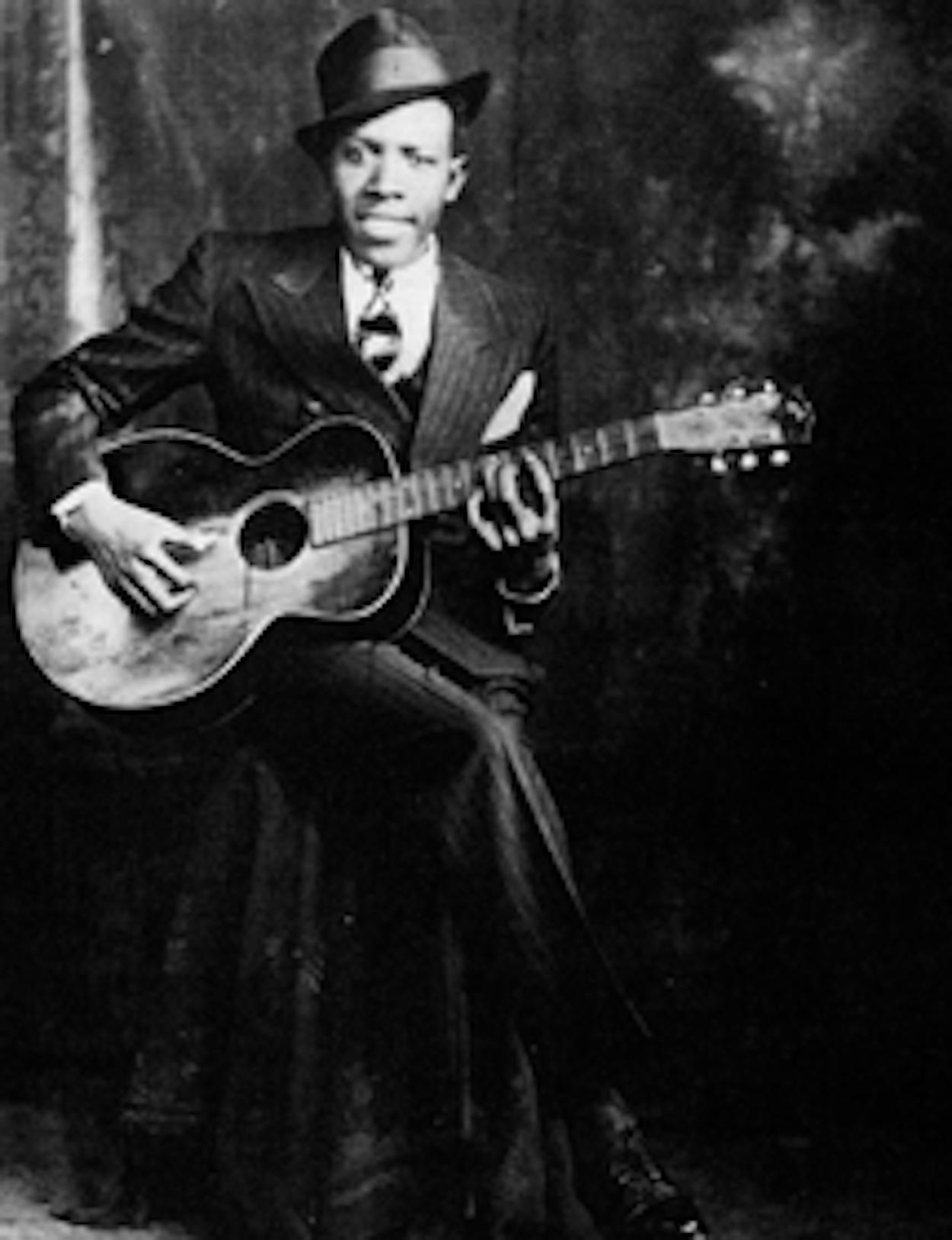Few figures in pop culture are more closely linked to the devil than Robert Johnson. Not only did the late blues hero write “Me and the Devil Blues” and “Hellhound on My Trail,” but legend has it he sold his soul in exchange for his guitar skills.
In a twist, a Dallas church is now preserving the legacy of the bluesman who sang about walking alongside Satan.
In June, the First Presbyterian Church of Dallas bought 508 Park Ave., the downtown building where, in 1937, Johnson recorded almost half of the 29 songs that make up his entire discography. The church purchased the building from its previous owner, who tried to have the dilapidated three-story Art Deco structure demolished because it was unmarketable, due in part to its proximity to the Stewpot, a community center run by First Presbyterian that provides medical services and counseling for Dallas’s homeless.
“Robert Johnson’s signature song is ‘Cross Road Blues,’ and a lot of people we serve are at the crossroads, too, brushing shoulders with the negative side of life,” said Reverend Bruce Buchanan, executive director of the Stewpot and an associate pastor at First Presbyterian. “Johnson’s story isn’t foreign to us at all.”
In the 1930s, Johnson—who would have turned one hundred this year—was an unknown vagabond musician who primarily worked the Delta blues circuits in Arkansas, Tennessee and Mississippi, his home state. It was his dream to cut a record, and in late 1936 a music producer took Johnson to Gunter Hotel in San Antonio, where, in a small room, he recorded “Cross Road Blues, “Sweet Home Chicago” and fourteen other songs.
Seven months later, Johnson was called back to Texas, this time to Dallas. He worked with Don Law, a producer at Brunswick Records, and recorded the final thirteen songs of his career, including “Me and the Devil Blues,” “Love in Vain” (which the Rolling Stones covered), and “Traveling Riverside Blues” (covered by Led Zeppelin).
Fourteen months later, at age 27, he died mysteriously. (Johnson is widely credited as the first member of the 27 Club, a group of musicians, including Jimi Hendrix, Janis Joplin and Kurt Cobain, who died at that young age.) Some say a lover’s jealous husband poisoned Mr. Johnson with strychnine; others say he died of syphilis—his death certificate simply states “No Doctor.”
But the puzzle confounding historians was figuring out where exactly Johnson had recorded the last of his famous songs. Experts assumed the recording took place at 508 Park—Brunswick Records’s branch office at the time—and in 2004, Eric Clapton even filmed part of his Sessions for Robert J DVD inside the decrepit, boarded-up building. Then, in 2005, a letter surfaced in which Law named 508 Park as the site.
The official proof of the structure’s storied history was not enough to keep the building safe in a city with a bad reputation for bulldozing first and asking questions later.
The previous owner, Glazer’s, a wholesale distribution company, had tried to sell it for decades, but no one bought the property, partly because of the constant presence of homeless people in the area. In 2009, the company asked the city’s permission to demolish the building but was denied the permit. When Glazer’s finally sold the property to First Presbyterian in June, the church’s promise to renovate the property had blues lovers and historians rejoicing.
“It’s a best-case scenario,” said Katherine Seale, executive director of Preservation Dallas. “The building is important—not only does it help tell the story of our country’s musical history, but there are very few examples of Art Deco architecture in Dallas, and even fewer ZigZag Moderne buildings, a style that exemplifies the spirit of the 1930s.”
Peter Guralnick, author of Searching for Robert Johnson (1989), said buildings like 508 Park are too often leveled.
“Everybody said, ‘You can’t tear down Stax Records,’ but they did,” Guralnick said of the Memphis recording studio that was demolished in 1989. (A partial reproduction was later built for the Stax Museum of American Soul Music.)
“It’s great that the efforts have borne fruit” at 508 Park, he said. “Robert Johnson’s influence is extraordinary.”
First Presbyterian plans to start renovating the 23,000-square-foot building next year, creating a cultural center complete with a museum, a performance space, an art studio, and a music education center called “The Spirit of the Blues.” A recording studio will be built in the same area where Johnson and others cut records—including Bob Wills, the Western swing musician—and the vacant building next door will be torn down and replaced by a bandshell-style outdoor amphitheater.
Even with the renovations, First Presbyterian does not plan to turn its back on the homeless community. Their artwork will hang in the new gallery, and shows will be performed for them in the new amphitheater.
And that is perfectly fitting. After all, Johnson spent most of his life essentially homeless, drifting from town to town.
“There’s a natural connection,” Buchanan said. “Robert Johnson could definitely relate to these people and the work we do.”







